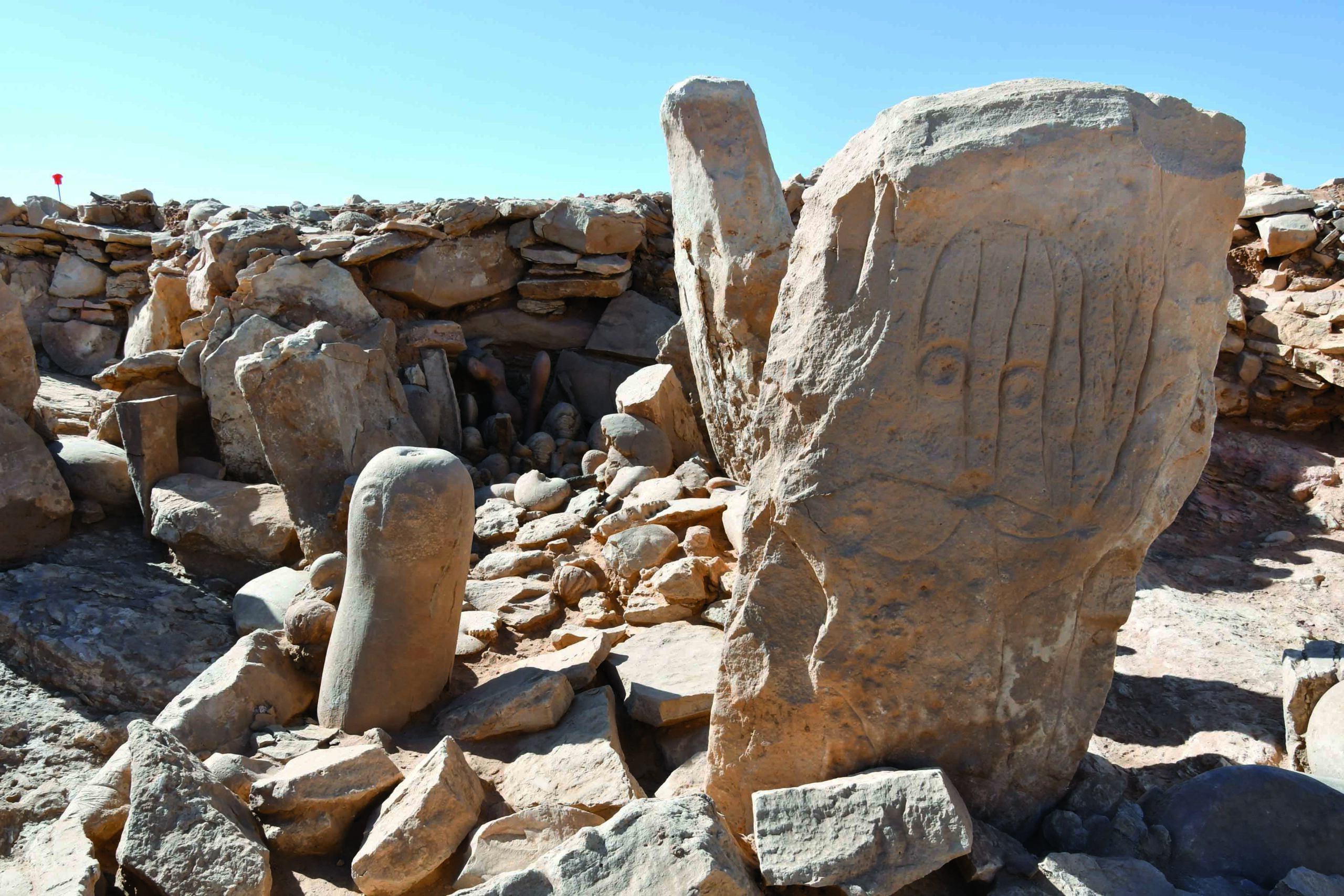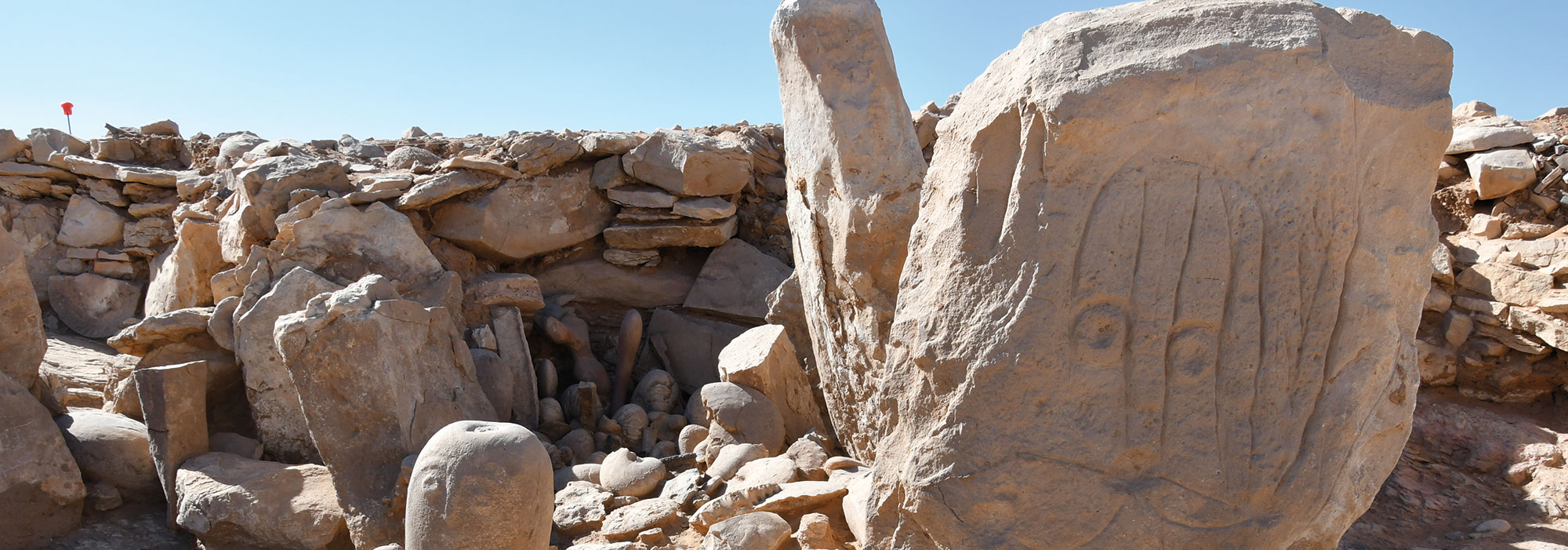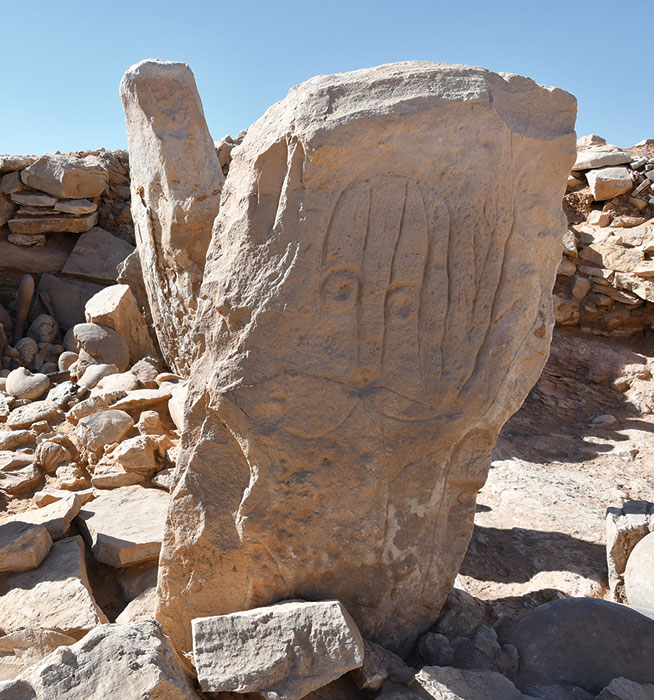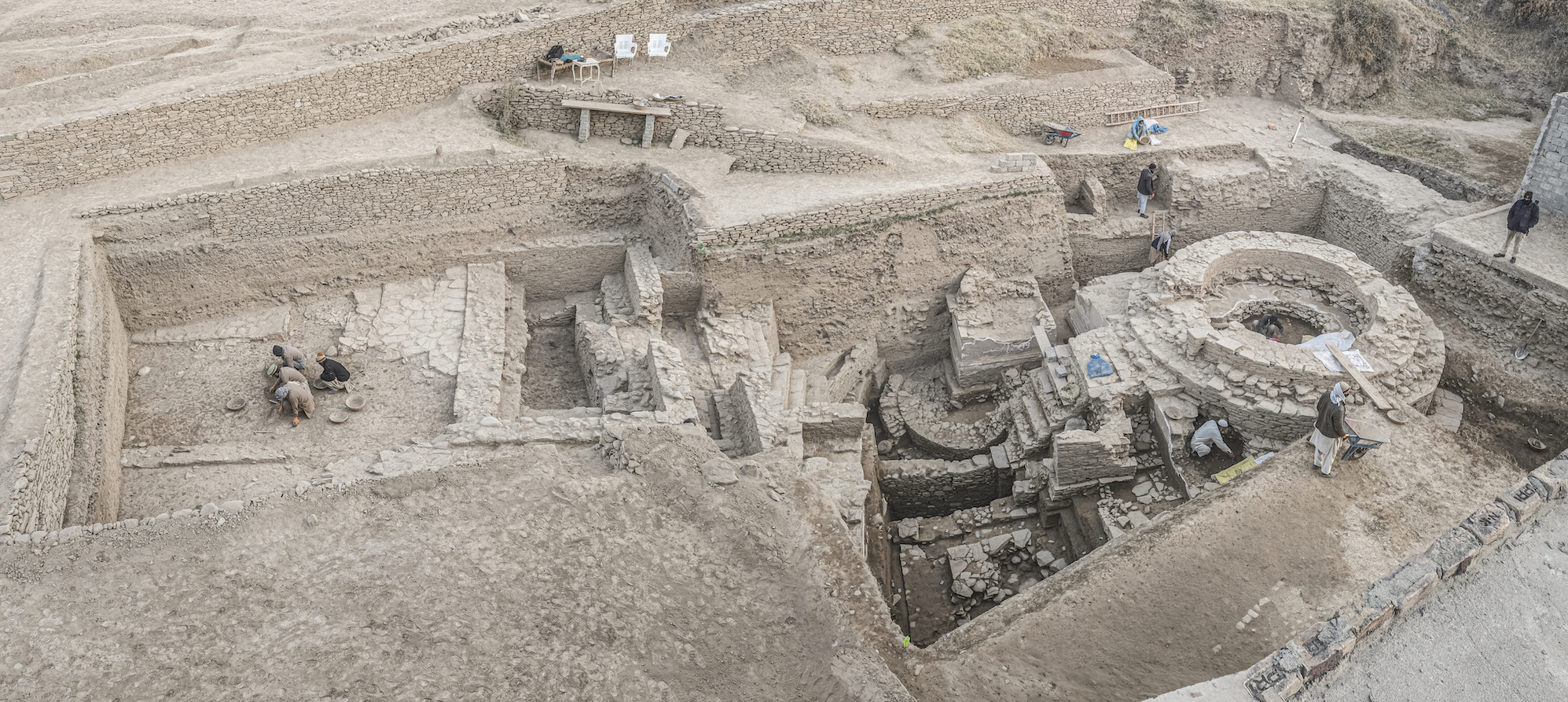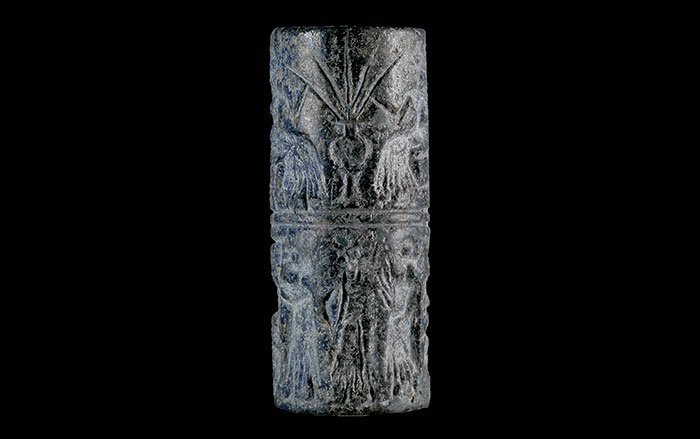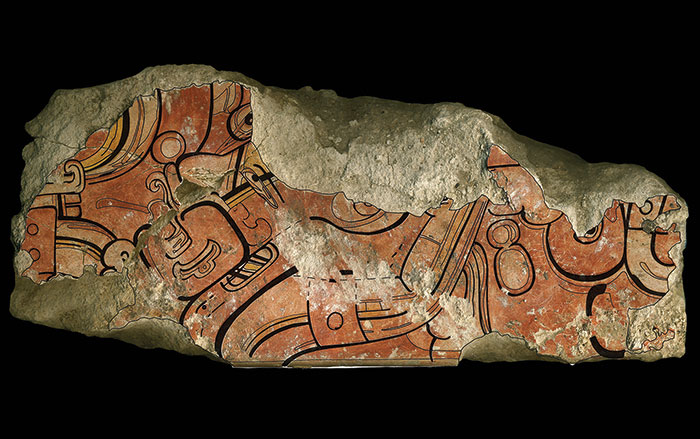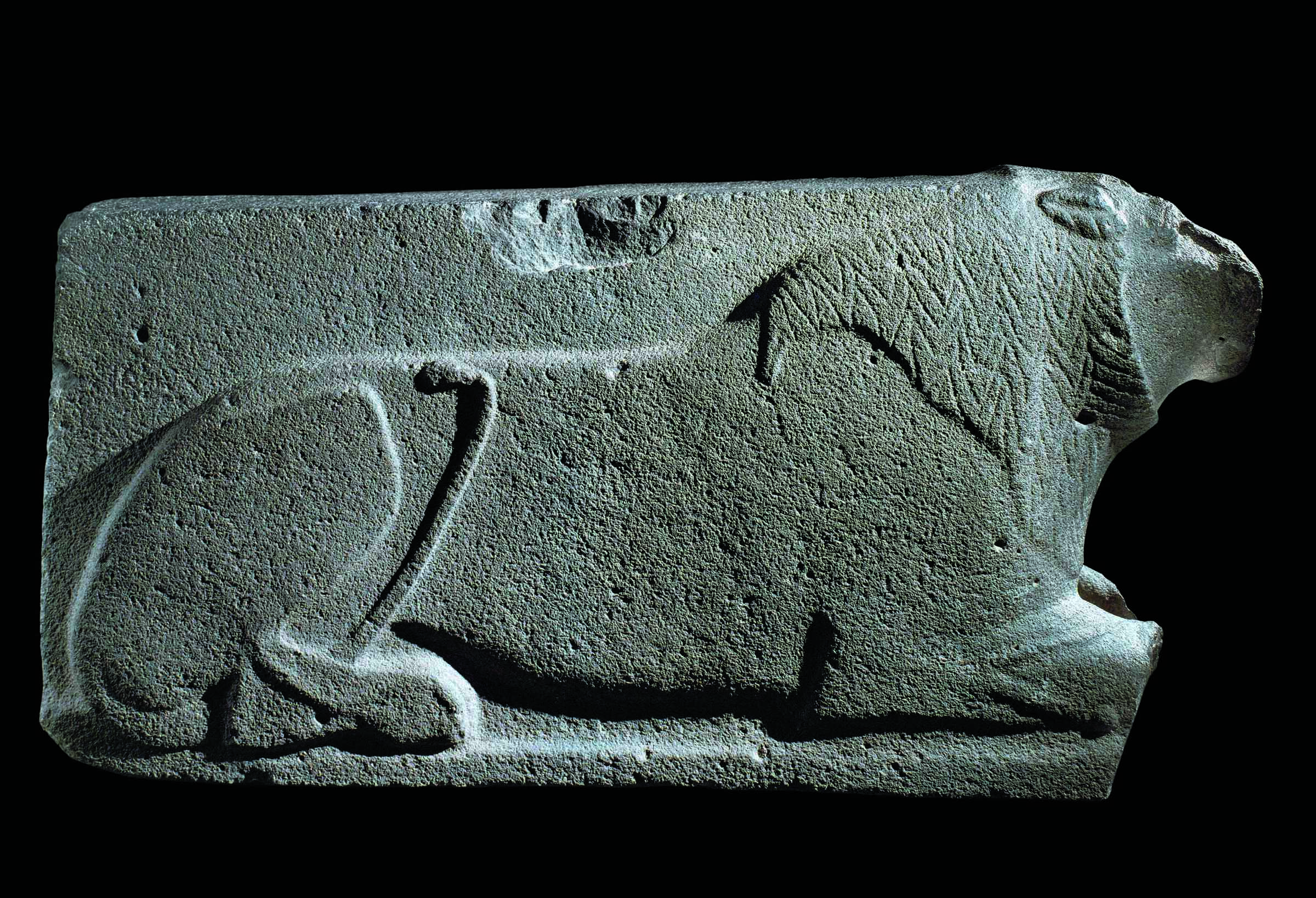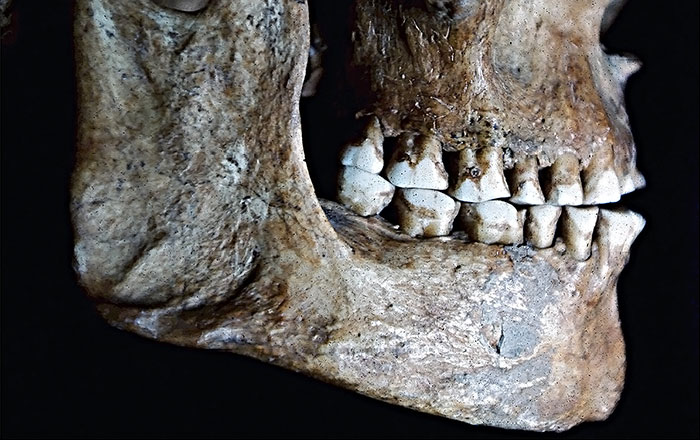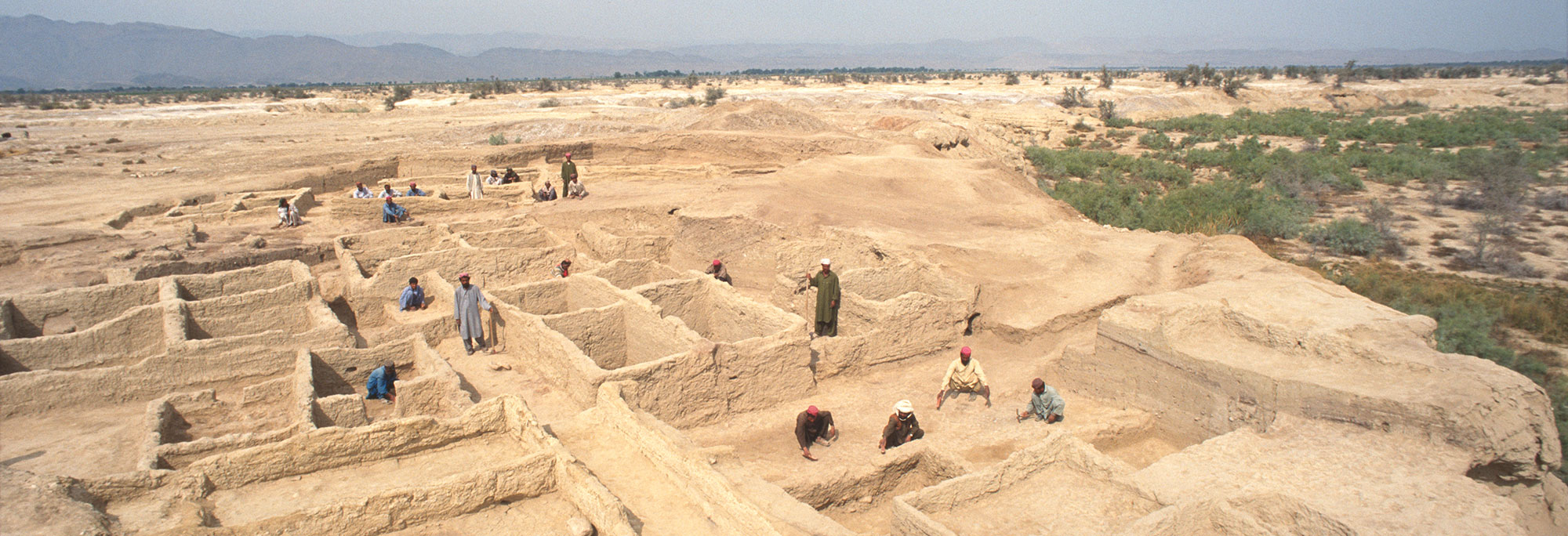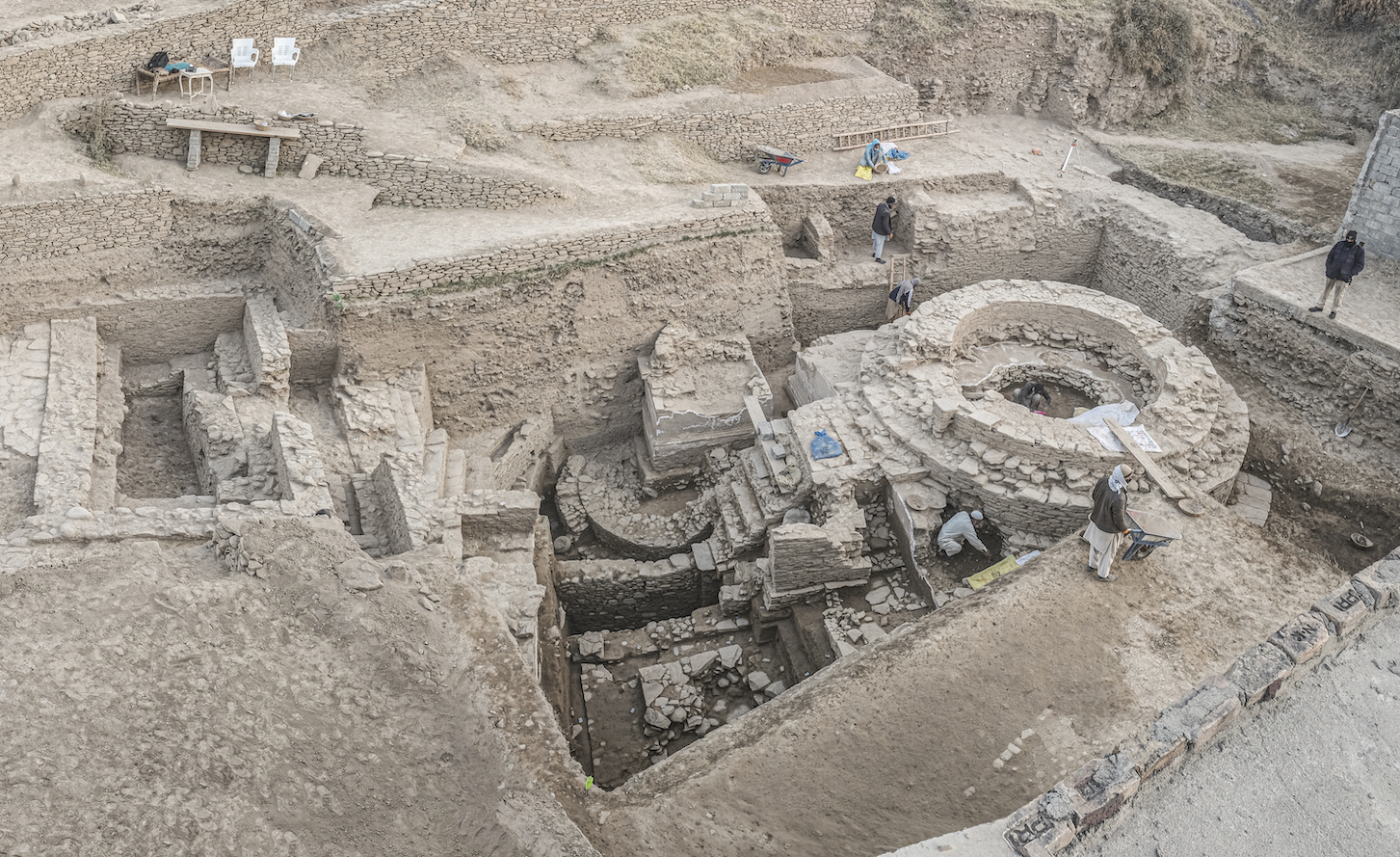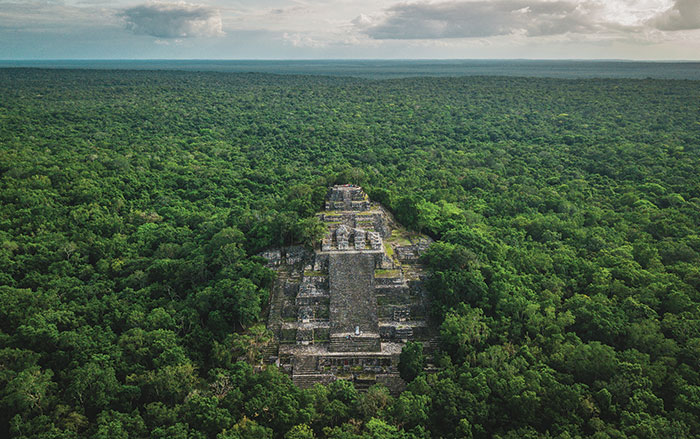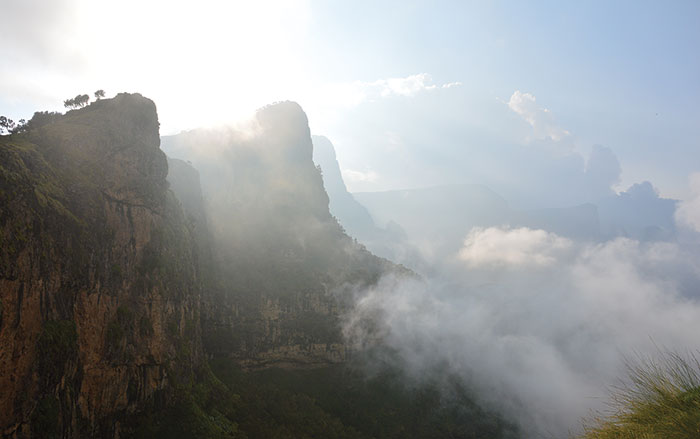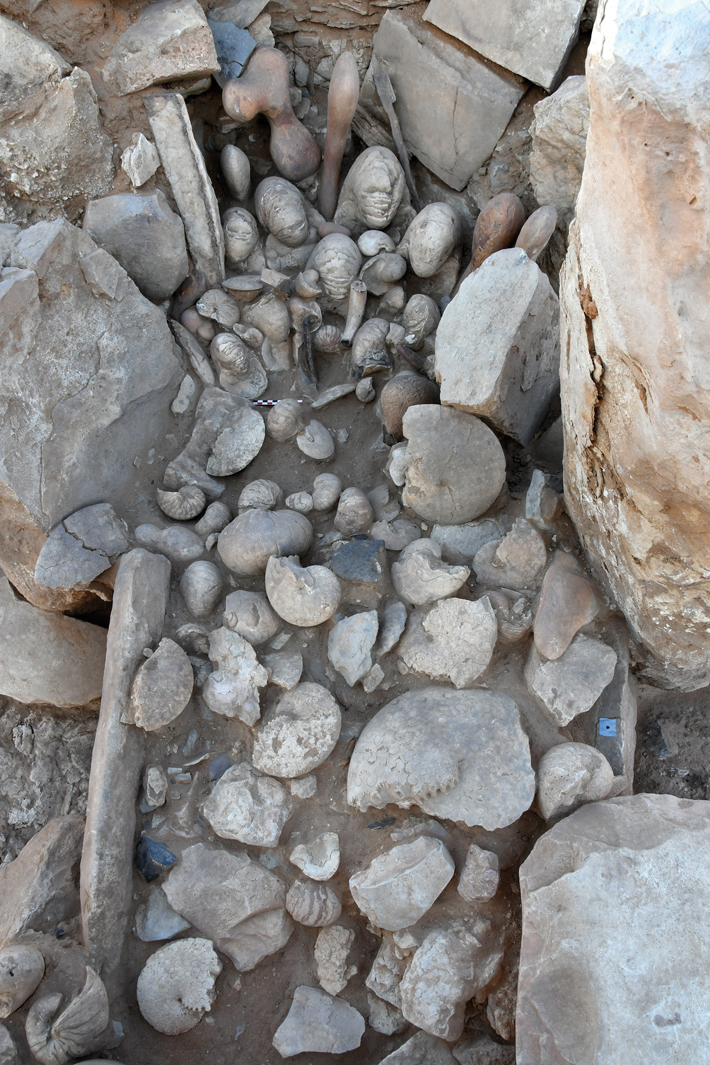
In the deserts of southeastern Jordan around 9,000 years ago, hunters erected a stone shrine that is one of the earliest ritual structures ever unearthed. A team led by archaeologists Mohammad Tarawneh of Al-Hussein Bin Talal University and Wael Abu-Azizeh of the French Institute of the Near East discovered the shrine in a Neolithic campsite near a network of “desert kites.” Desert kites consist of pairs of rock walls that extend across the landscape, often over several miles, and converge on an enclosure where prey such as gazelles could be herded and then easily dispatched. The team previously established that the kites near the shrine date to the Neolithic period (12,000 to 7,000 years ago in Jordan) and have now discovered clear evidence of the shrine’s connection to these enormous hunting installations.
The shrine was built as a scale model of a kite, and one of two standing stelas found in the structure bears a stylized depiction of a desert kite. The team also unearthed a large stone altar with a number of incisions near a hearth. “One hypothesis is that the stone altar was used for butchering gazelle carcasses in the context of ritual activities carried out within the shrine,” says Abu-Azizeh. “The ritual performance most likely invoked supernatural forces for successful hunts.” A surprising cache of some 150 marine fossils was also found in the shrine, but the collection’s purpose remains unknown.
